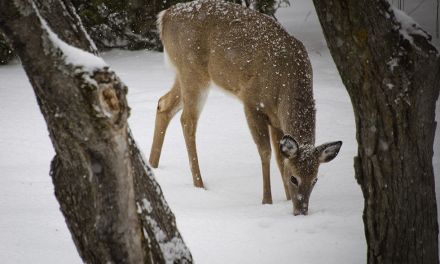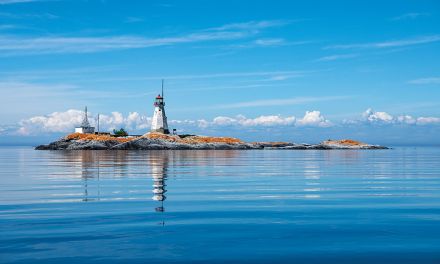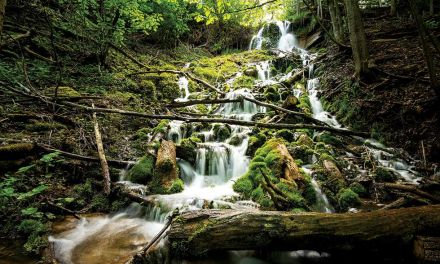Turtle hatchlings get their close up as Parks Canada team member releases them back into the wild at Georgian Bay Islands National Park.
REPTILE RESCUE MISSION
by Cara Williams, photos courtesy of Parks Canada
Parks Canada’s “On the Road Again” campaign is leading the charge in protecting amphibian and reptilian inhabitants of Georgian Bay and Lake Huron.
Chances are, if you have an Ontario driver’s license, you’ve likely spotted turtles wending their way hesitatingly across our local roads as traffic rushes by a tad too closely. Now listed as species at risk, these little adventurers are sparking a fair bit of friendly chatter among us locals. With Southern Ontario boasting the highest concentration of roads and traffic in Canada, it’s no wonder that road mortality is the leading danger to turtles and reptiles. In response, Parks Canada’s “On the Road Again” campaign is at the forefront of efforts to safeguard these vulnerable herptile populations. The project not only supports migration and protects nesting grounds, but also elevates public awareness regarding ecological issues. Its efforts are particularly impactful in the Georgian Bay Islands National Park and Bruce Peninsula National Park, areas known for their rich natural beauty and strategic positions along the Escarpment.
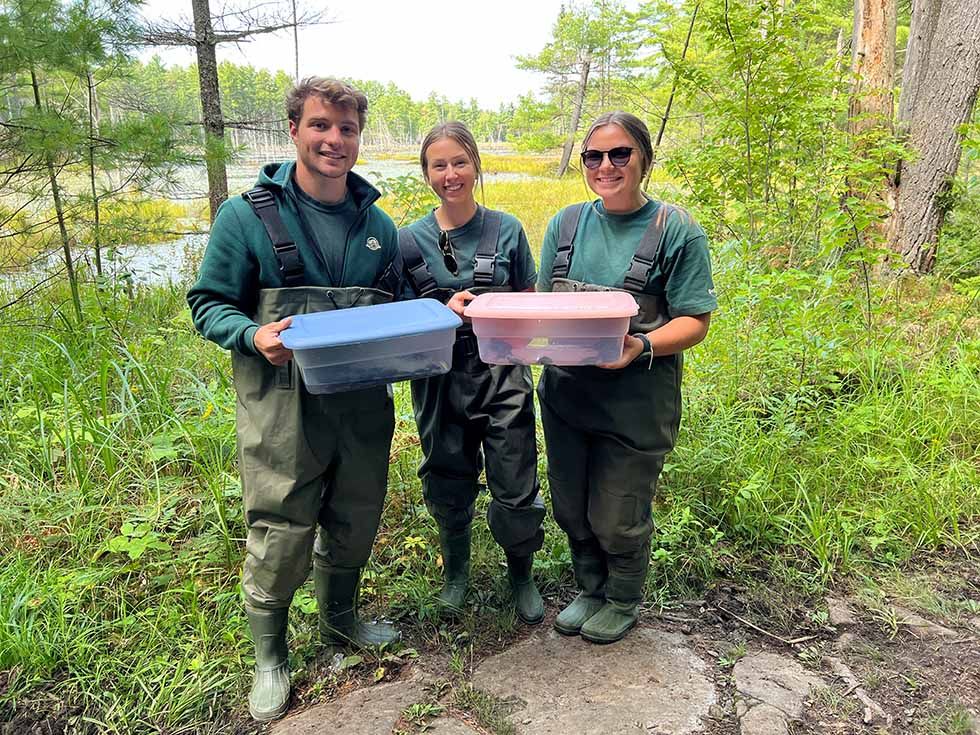
The Parks Canada “On the Road Again” team found turtle eggs by the roadside. They were then incubated and re-released to their wetland after they hatched.
Bruce Peninsula National Park is home to over 30 species at-risk, including Blanding’s turtles, Midland painted turtles and snapping turtles. Katherine Welch, coordinator of the On the Road Again campaign, emphasized turtles’ key roles in the ecosystem, highlighting their contributions to the food chain, waterway health, seed dispersal and vegetation growth. “Turtles are crucial as ‘keepers of the wetlands’,” Welch remarked. “Yet, with less than one percent reaching adulthood, there’s a pressing need for proactive measures in the Georgian Bay and Escarpment regions.” Welch explained how road networks adversely affect reptile and amphibian populations, emphasizing a collaboration with partner stakeholders and local Indigenous communities, to try to mitigate impacts to these species. “In the Bruce Peninsula, we operate the Turtle Tracker Program, where volunteers actively engage each spring to safeguard the nesting sites of female turtles along roadways. This effort addresses one of the most significant threats to turtles—roadside nesting. Females often migrate across these areas, attracted by the ideal nesting conditions found in the roadside substrate. The program employs nest boxes to shield these nests primarily from predators and prevent road mortality. As hatchlings emerge, the Turtle Trackers remove the nest boxes, facilitating their safe passage. This initiative stands as a testament to the power of community science, showcasing remarkable success across numerous towns.”
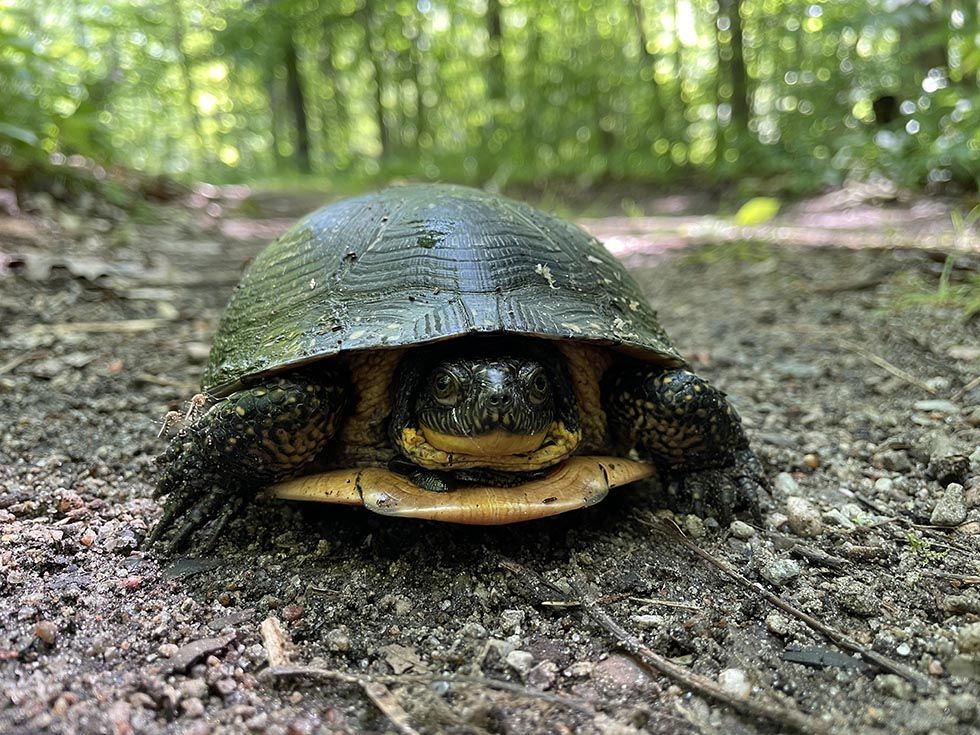
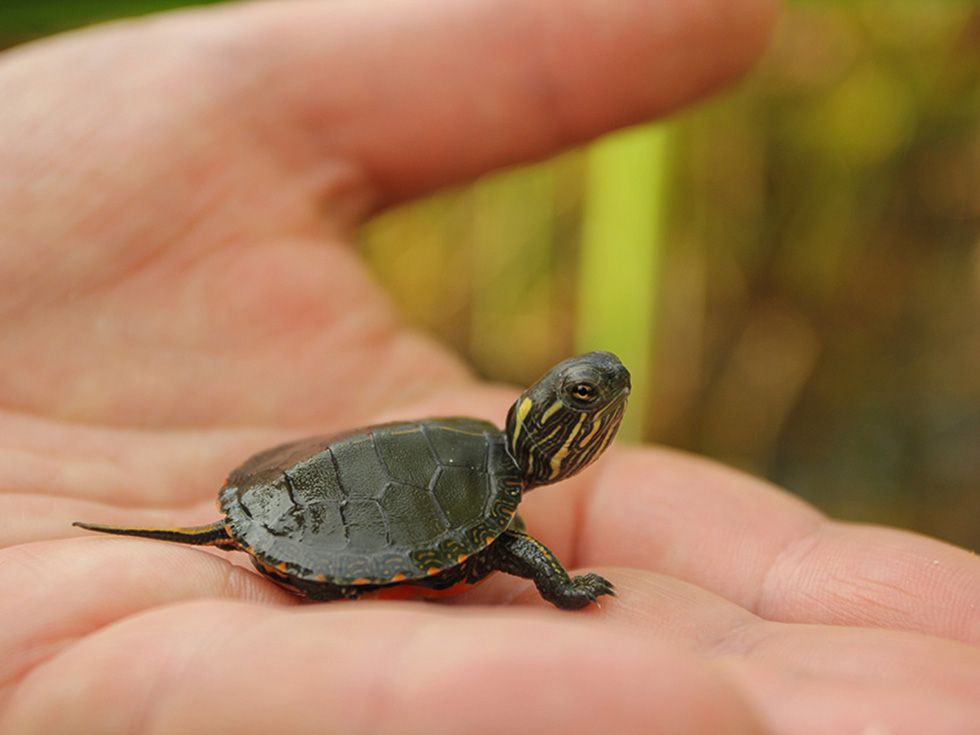
Turtles are crucial as ‘keepers of the wetlands’.
Yet, with less than one percent reaching adulthood, there’s a pressing need for proactive measures in the Georgian Bay and Escarpment regions.
KATHERINE WELCH, COORDINATOR OF THE ON THE ROAD AGAIN CAMPAIGN.
The campaign’s efforts also include the installation of eco-passages beneath roads near Georgian Bay, designed to aid reptile migration while preventing road mortality. These concrete channels are equipped with grates for sunlight and fencing to deter reptiles from venturing onto the road. With over 2,000 reptiles significantly using these passages, the project has seen a significant decrease in turtle deaths.
To deepen their understanding of reptilian life in Georgian Bay and the Escarpment, Parks Canada collaborates with Indigenous groups like the Bruce Saugeen Ojibway and the Mohawk Nation. This partnership combines Indigenous knowledge with Western scientific practices, enhancing the campaign’s conservation strategies.
As residents of the Escarpment, we can contribute by driving cautiously during nesting seasons and assisting injured turtles through organizations like the Ontario Turtle Conservation Centre. The iNaturalist platform also offers an opportunity for community involvement in biodiversity mapping, crucial for the Georgian Bay and Escarpment regions.
Welch encourages visiting Parks Canada for insights into these protection efforts, emphasizing the community’s responsibility to safeguard the unique ecological landscape of Georgian Bay and the Escarpment. “Community science has proven to be a huge success story. Community members can help decrease mortality by installing nest boxes on their property.” This collaborative approach, blending local action, scientific research, and Indigenous wisdom, is pivotal for the ongoing success of On the Road Again in preserving the delicate balance of Georgian Bay’s ecosystem. Visit ontarioturtle.ca for more information on how you can contribute and call the Turtle Hotline at 705-741-5000 for directions on how to help. E
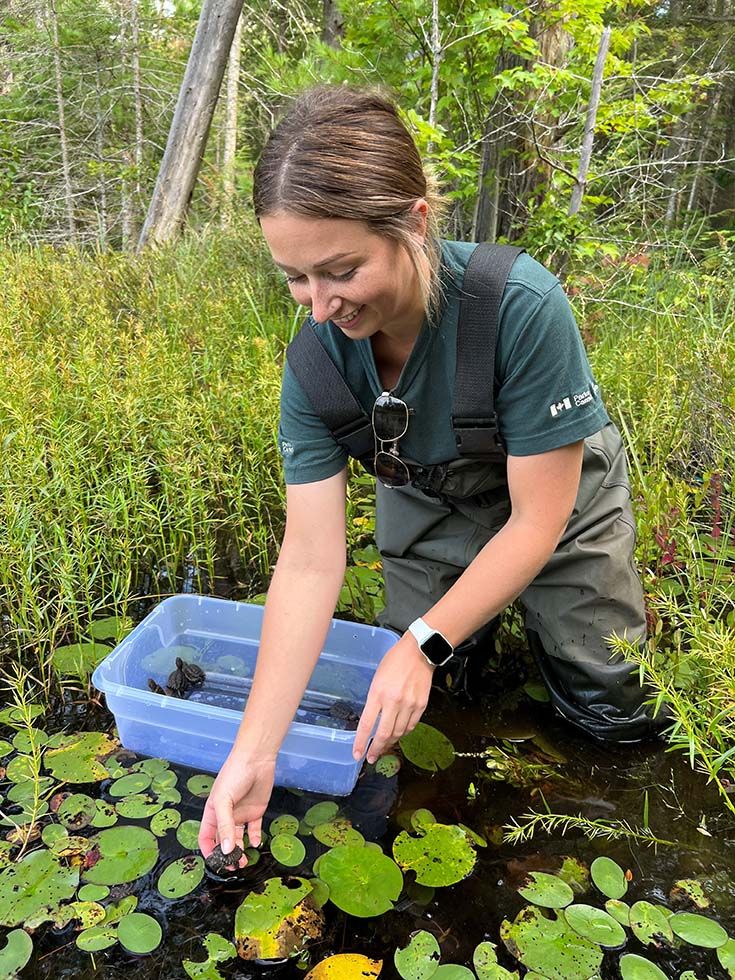
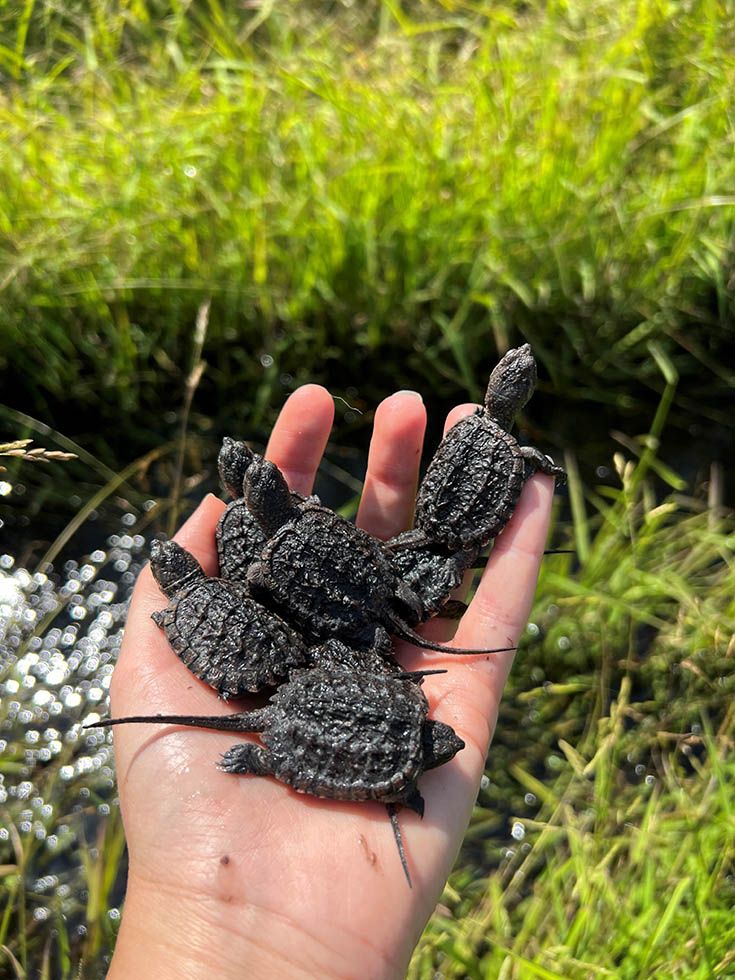
HELP A TURTLE CROSS A ROAD
• Preparation: Wear gloves for a better grip on the turtle. Ensure you can safely stop and exit your vehicle without endangering yourself or others.
• Handling: Gently lift the turtle at its midsection, akin to holding a hamburger, using gloves when possible. Avoid lifting it by its tail to prevent spinal damage.
• Crossing Direction: Always aid the turtle in continuing in the direction it was headed, as reversing its course may lead it to attempt crossing again.
• Final Steps: Place the turtle well beyond the road’s edge, ensuring it is far from traffic. Wash your hands well after the interaction to remove potential bacteria.
HOW TO SAFELY HANDLE SNAPPING TURTLES
• Approach and Handling: Approach from behind. Employ the “pizza pie” technique: secure the tail with one hand, and support the underside with the other hand from behind, ensuring you’re lifting from the rear to avoid bites.
• Alternative Method: If handling feels unsafe, consider using a small shovel to guide the turtle off the road gently.
WHAT TO DO WITH INJURED TURTLES
• Initial Caution: Prioritize safety when stopping. Handle the injured turtle with care to avoid further harm.
• Containment: Place the turtle in a ventilated box. Refrain from feeding it.
• Professional Care: Contact the Ontario Turtle Conservation Centre (OTCC) at 705-741-5000 for guidance and arrangement of rehabilitation.
Important Reminder: Turtles possess remarkable resilience. Injuries that appear severe may still allow for recovery with timely professional intervention. In cases of deceased turtles, contributions to conservation can still be made through disease research or by incubating any remaining eggs for future release.
Learn more and get involved: Visit parks.canada.ca to discover more about Ontario’s turtles, their conservation, and how you can contribute to their protection.


